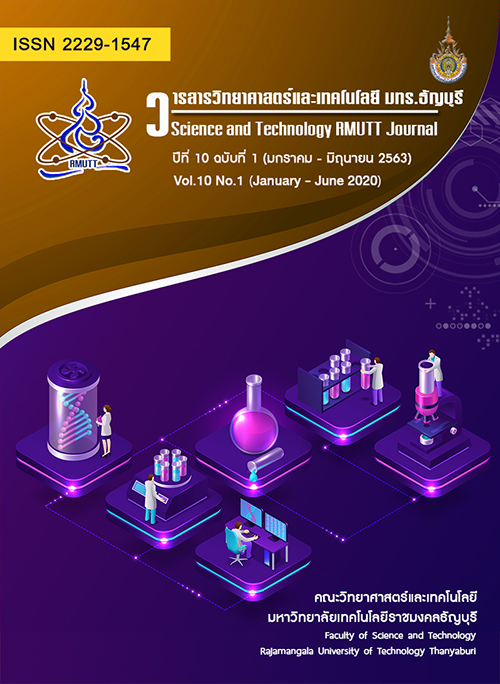Development of Watermelon (Citrullus lanatus) Rind Spaghetti with Agar Agar – A Preliminary Study
Main Article Content
Abstract
The present study reports on the preparation of sweet and savory spaghetti by using an otherwise fruit waste namely watermelon rind along with agar. The sensory evaluation was carried out by 50 panelists using a hedonic scale. Panelists’ response was towards liking spaghetti. Although higher scores for all attributes were observed for savory spaghetti than sweet spaghetti, no statistical significant difference was observed between two types of spaghetti for all attributes. Nutritional composition suggested a low energy product. Thus, the results of present indicate a novel way of using fruit waste into a popular product that is low energy and confers health benefits along being highly acceptable.
Article Details
References
Quadri A, and Rao A. Development, Organoleptic Evaluation and Acceptability of Products Developed from Agro Based Wastes-Seeds and Rind of Watermelon. Journal of Food Science and Nutrition Research. 2018. 1: 001-009.
Madhuri P and Devi K. Value addition to watermelon fruit waste. Journal of Food Science and Technology. 2003. 40: 222-224.
Gusmini G., Todd C., and T.C Wehner T.C. Cultivars Suitable for Watermelon Rind Pickles. Cucurbit Genetics Cooperative Report. 2004. 27: 41-42.
Wanwimolruk S., Kanchanamayoon O., Boonpangrak S., and V. Prachayasittikul V. Food safety in Thailand 1: it is safe to eat watermelon and durian in Thailand”. Environ Health Prev Med. 2015. 20: 204–15.
Olaitan N.I., Eke M.O., and Agudu S.S. Effect of Watermelon (Citrullus lantus) Rind Flour Supplementation on the Quality of Wheat Based Cookies. The International Journal of Engineering and Science. 2017. 6: 38-44.
Lee-Hoon Ho., Paet M., and Suhaimi M.A. The Physicochemical and Sensory Attributes of Watermelon Rind Flour Incorporated Steamed Cupcake. J. Agrobiotech. 2018. 9 (1S): 31–42.
Hoque M.M. and Iqbal A. Drying of watermelon rind and development of cakes from rind powder. International Journal of Novel Research in Life Sciences. 2015. 2(1): 14-21.
Hanan Al-Sayed M.A. and Ahmed A.R. Utilization of watermelon rinds and sharlyn melon peels as a natural source of dietary fiber and antioxidants in cake. Annals of Agricultural Sciences. 2013. 58: 83 -95.
Naknaen P. T. Itthisoponkul, A. Sondee A. and Angsombat. N. Utilization of watermelon rind waste as a potential source of dietary fiber to improve health promoting properties and reduce glycemic index for cookie making. Food Sci Biotechnol. 2016. 25 415–424.
Menon R. Padmaja G. and Sajeev. M.S. Ultrastructural and Starch Digestibility Characteristics of Sweet Potato Spaghetti: Effects of Edible Gums and Fibers. International Journal of Food Properties. 2015. 18: 1231-1247.
Watts B.M., Ylimaki G.L., and Jeffery L.E. Basic Sensory Methods for Food Evaluation. Ottawa: The International Development Research Centre. (1989).
Detchewa P., Thongngam M., Jane J.L., and Naivikul O. Preparation of Gluten-free Rice Spaghetti with Soy Protein Isolate using Twin-Screw Extrusion. J Food Sci Technol. 2016. 53: 3485-3494.
Bureau of Indian Standards IS: 7874 Part I, 1992.
Bureau of Indian Standards IS: 7874 Part II, 1992.
ANALAR Standards for Laboratory Chemicals. Formulated and Issued by British Drug House Limited. 1967.
R. Armisen and F. Galatas http://www.fao.org/
/x5822e/x5822e03.htm
Romdhane M.B., Haddar A., Ghazala I., Jeddou K..B., Helbert C.B., and Ellouz-Chaabouni S. Optimization of Polysaccharides Extraction from Watermelon Rinds: Structure, Functional and Biological Activities. Food Chem. 2017. 216: 355-364.
Ozcan T., Akpinar-Bayizit A., Yilmaz-Ersan L., and Delikanli. B. Phenolics in Human Health. International Journal of Chemical Engineering and Applications. 2014. 5: 393 – 396.
Rimando A.M. and Perkins P. Determination of Citrulline in Watermelon Rind. Journal of Chromatography A. 2015. 1078. 1-2: 196-200.
Allerton T.D., Proctor D.N., Stephens J.M., Dugas T.R., Spielmann G., and Irving. B.A. l-Citrulline Supplementation: Impact on Cardiometabolic Health”. 2018. Nutrients. 19: 1-24.


